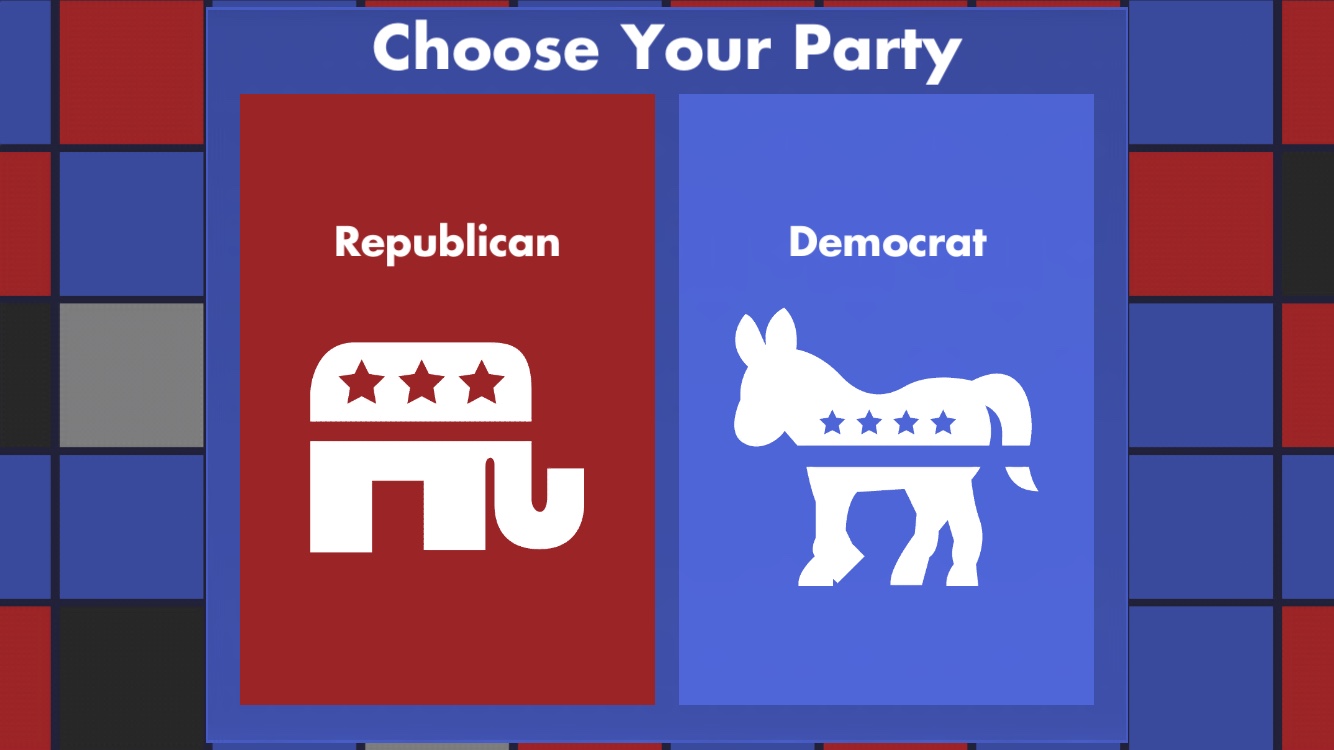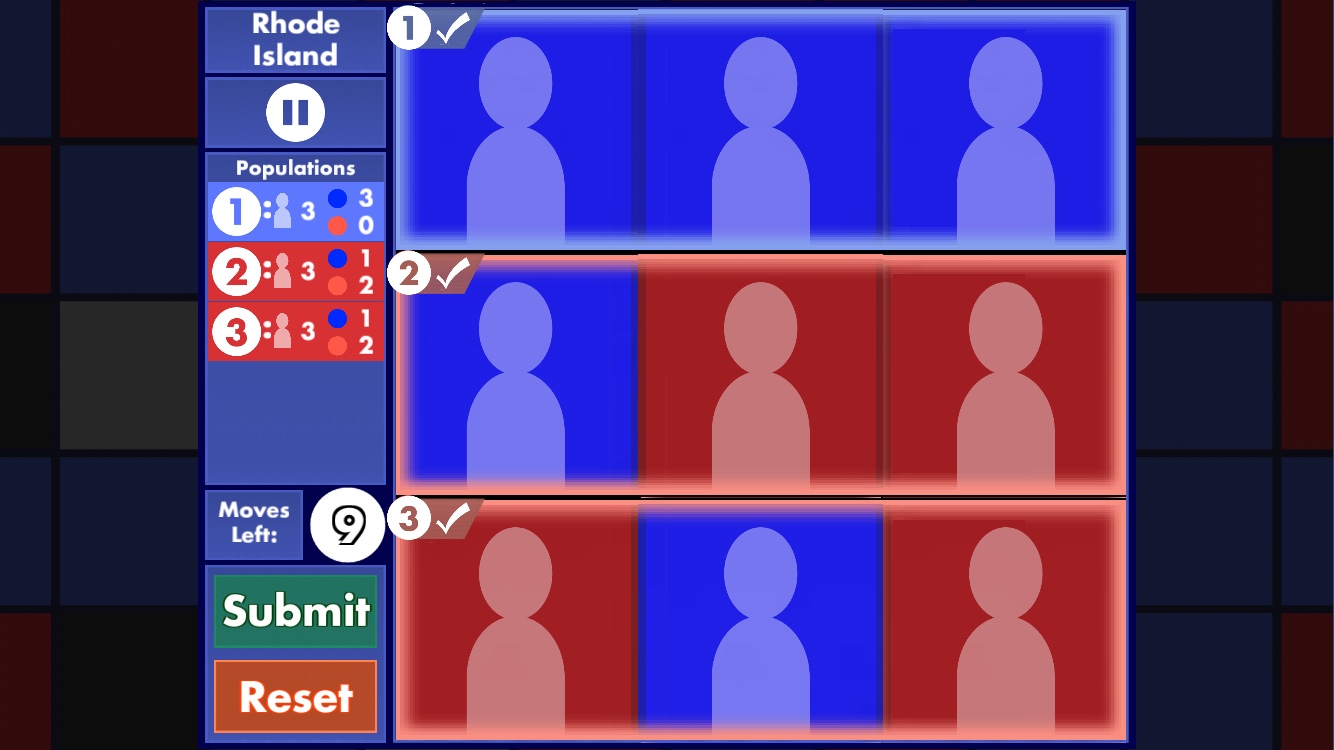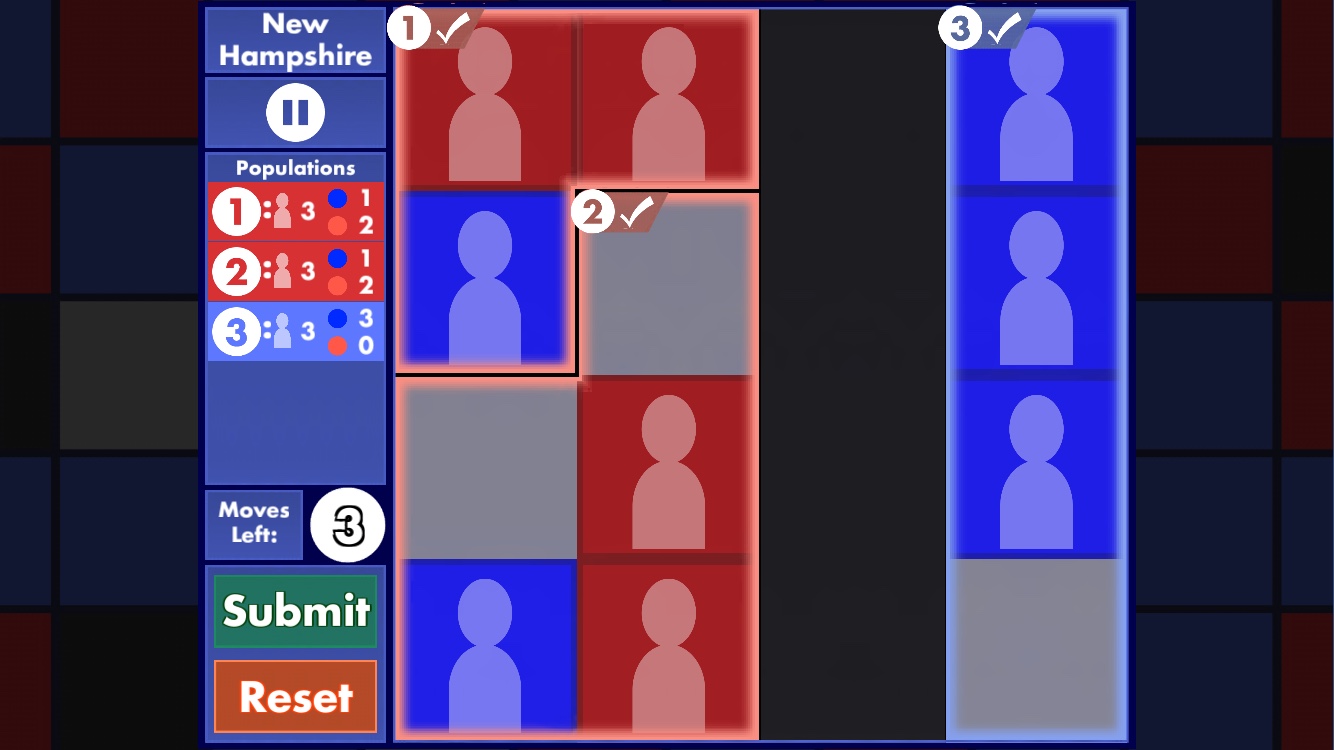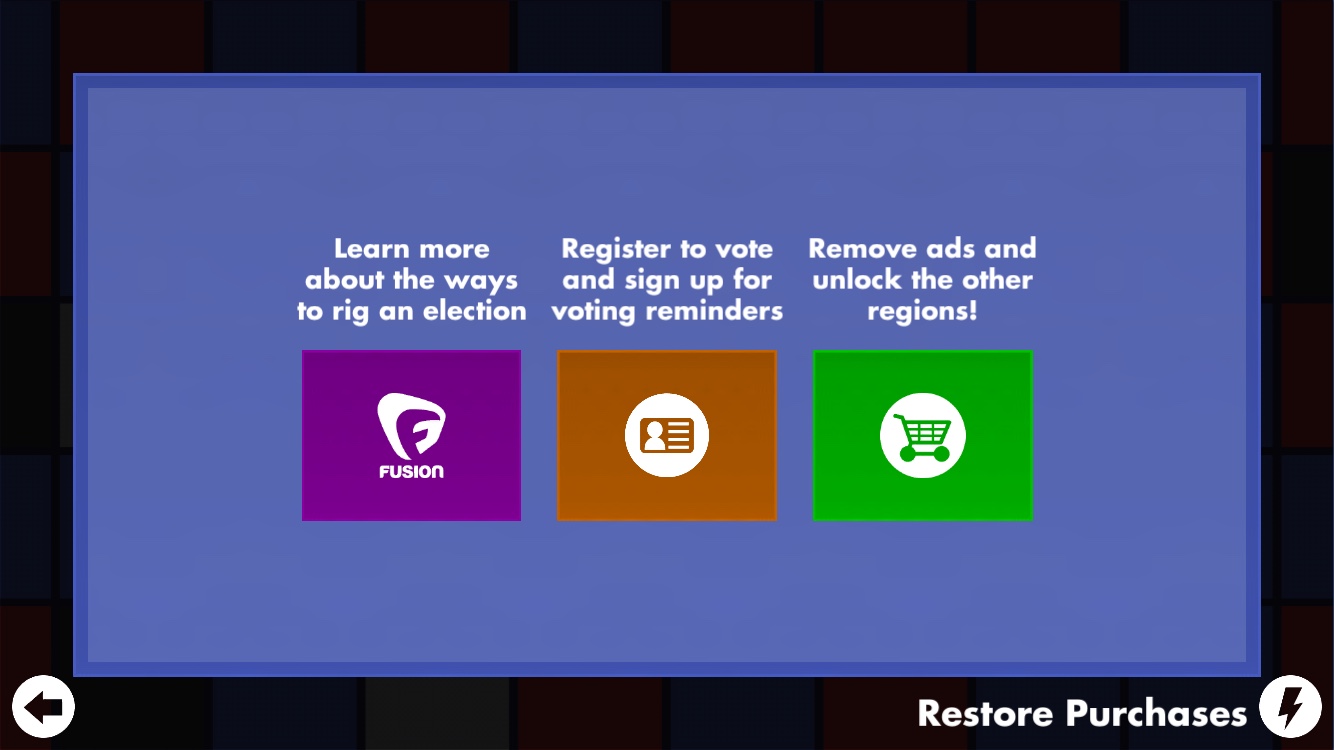
Traffic whizzed past Clint Waters and Matt Bitner as they stood on the side of Interstate 85 in North Carolina with Fusion correspondent Natasha Del Toro. The highway runs through the state’s 12th Congressional district, one of the most gerrymandered districts in the United States, and they were there filming a documentary on how legislative districts impact elections.
“It looks like a jellyfish arm that washed up on a beach or something,” Bitner says in the film, looking at a map of the district.
Waters and Bitner aren’t journalists; they’re video game developers. Fusion commissioned Hitcents, the company they work for, to create an mobile game to accompany the documentary, which Fusion titled “Rigged.” (It has nothing to do with Donald Trump’s recent claims that the election is rigged against him.) They were included in the documentary to promote the game and highlight how the reporting influenced its development and changed their thinking about redistricting.
It can be difficult to make a documentary about gerrymandering visually interesting. (Back in 2011, ProPublica tackled the same challenge by making a rap video.) “It’s an interesting and important topic, but there’s a reason more people don’t make documentaries about it. It’s not visual and it’s very technical,” Del Toro said. They decided to try making a video game. With that idea in mind, the documentary team turned to the Fusion Media Group Center for Innovation & Engagement, a unit within the company that helps develop experimental projects. In a report released last year by the Tow Center for Digital Journalism at Columbia University, doctoral student Maxwell Foxman argued that news organizations can learn a lot from the gaming industry and use games as a way to better connect with their audience.“While games, play, and the news have a long history, we find ourselves at an exciting moment as newsmakers’ strategies and efforts to playfully engage with users are beginning to see benefits,” Foxman wrote. “For digital newsrooms already built around much of the same technology and practices of game designers, a playful approach seems particularly attractive.”
There have been other games created about gerrymandering, but those were mostly developed by educational companies. Fusion wanted something built by commercial developers who understood mobile gaming.
“We deliberately worked with people who don’t do ‘games for change,’ who aren’t in the journalism gaming realm. We wanted to have a group that’s had some success making commercial games,” said Sam Ford, who leads the Center for Innovation & Engagement. “How do you answer the challenge of trying to make a game about something like gerrymandering that’s still first and foremost a mobile game that people will engage with and enjoy playing?”
The Kentucky-based Hitcents had little experience with educational games, and many of the developers working on the game weren’t familiar with gerrymandering. “I’ll be honest and say I had no idea what gerrymandering was until we started this project, and I think that’s an experience that we wanted to translate to as many people as we can,” Waters told me.
They did, however, have experience creating commercially successful games. Hitcents was convinced it could craft a game that illustrated how gerrymandering worked but was also fun to play.
“This was my first foray going out into the wild world to actually work on a game,” Waters said. “It was really eye-opening, and it ended up influencing how we made the act of gerrymandering work within the game. Even though it is a crooked strategy, they have to abide by certain rules: For example, the populations in the district need to be roughly equal. They’re not supposed to draw districts over bodies of water, for example. In the game, you redistrict in the legal way, but it’s showing how you can win the majority of the districts in a location without having the majority of the voters.”
When users first open the game, they choose whether to play as Democrats or Republicans.

They then set about changing the maps in each state to ensure that their party controls a majority of the districts. The levels become increasingly difficult: Obstacles are added and users have a set number of moves to complete the process.


The first nine levels, or states, are free and ad-supported. Access to the rest of the game costs $0.99. When users finish the first portion of the game, they’re prompted to upgrade to the paid version, register to vote, and access the rest of Fusion’s “Rigged” coverage.

The game launched on September 14, and the documentary premiered shortly afterward. Rigged took about six months to develop, Waters said, which is extremely fast for Hitcents. (Last year, the company released Draw a Stickman Epic 2, which took more than 18 months to create. Hitcents is about two years into developing a Godfather game that’s scheduled to launch later this year.)
Fusion wouldn’t tell me how many people have downloaded or played the game, but Rachel Schallom, Fusion’s senior manager of interactives, said the game has exceeded Fusion’s admittedly conservative goals. When we spoke in early October, Schallom said “about 33 people” had paid to upgrade the game. That number has grown since then, but Schallom said it’s still a “a very small percentage” of users.
The metrics Fusion decided to focus on included the overall number of downloads, the number of play sessions, and the seven-day retention rate, Schallom said.
“Our metrics goals were very low because this is our first time,” she said. “One of the learning experiences for me was coming up with KPIs [key performance indicators] for a product we had never done before.”
Because Fusion had never developed a game and Hitcents had never worked with a news organization, there were a number of logistical and design issues to work out as they figured out how to combine journalism and gaming. Schallom’s team joined the project to help coordinate with the rest of the Rigged documentary and digital products.
One of Hitcents’ mockups of the game, for instance, was alien-themed. The developers’ intention there was to remove users from reality, “maybe making it easier to swallow,” Waters said. “I feel like people are just sick of politics, especially this year.”
“Journalistically, though, the sci-fi angle didn’t work with what Fusion was trying to achieve with the game and it didn’t fit in with the rest of its reporting. “When we thought about how to bring this together as one package, we realized images of the ill effects of gerrymandering on a very localized level, next to cartoon aliens, might not be the best juxtaposition,” Ford said.
There was also a question of who would maintain ownership of the game and submit it to the app stores. Technically, it is a Hitcents app, but both Hitcents and Fusion are promoting and marketing it. Ownership “matters for things like access to analytics,” Schallom said. “Some of those procedural things were not thought out ahead of time. Moving forward, we’re making sure that we have the right people in the room early enough.”
The companies are splitting whatever money they make from the app. They don’t expect to make much, but Schallom said Fusion liked that the fact that there was a potential revenue component to the project, even though it wasn’t the game’s primary goal.
Fusion wouldn’t say whether it’s planning to produce another game, but it continues to look at possibilities for new forms of reporting and storytelling and is interested in exploring new types of partnerships. Fusion is “thinking about how we take a nonlinear, multiplatform, transmedia approach to the stories that we do,” Ford said.
“A lot of that is about new ways of relationship forming and relationship management that we need to think through as a company,” he said. “How do we have conversations with those external groups, and when it seems there’s high potential for a relationship, how do we move forward with it?”